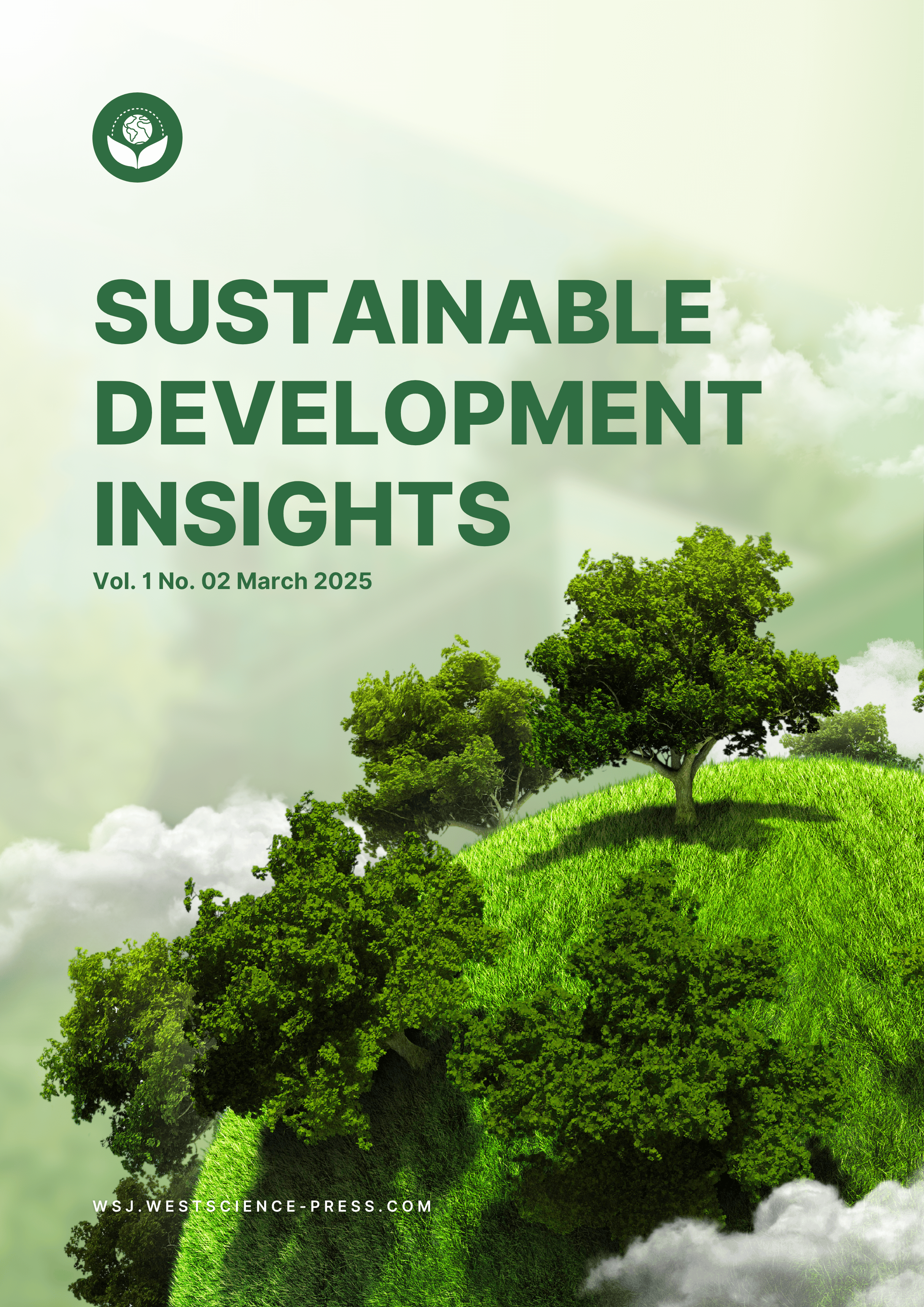Green HRM and Corporate Sustainability: A Bibliometric Perspective
DOI:
https://doi.org/10.58812/sdi.v2i01.1787Keywords:
Green Human Resource Management, Corporate Sustainability, Employee Green Behavior, Corporate Social ResponsibilityAbstract
Green Human Resource Management (Green HRM) has gained increasing attention as a crucial driver of corporate sustainability, integrating environmental responsibility into human resource policies and practices. This study employs a bibliometric analysis using data from the Scopus database to map the intellectual landscape of Green HRM and its connection to corporate sustainability. The findings reveal that Green HRM is strongly linked to key sustainability dimensions, including employee green behavior, corporate social responsibility, and green innovation. The co-authorship analysis highlights leading scholars and research collaborations across different regions, with China, the United Kingdom, and Australia playing central roles in shaping the discourse. However, challenges persist in measuring the long-term impact of Green HRM, aligning it with corporate strategy, and expanding international research collaboration. This study emphasizes the need for empirical validation, interdisciplinary research, and the integration of digital transformation in Green HRM practices. By addressing these gaps, Green HRM can serve as a transformative tool for fostering corporate sustainability and achieving long-term environmental and business goals.
References
[1] T. Jamal, M. Zahid, J. M. Martins, M. N. Mata, H. U. Rahman, and P. N. Mata, “Perceived green human resource management practices and corporate sustainability: Multigroup analysis and major industries perspectives,” Sustainability, vol. 13, no. 6, p. 3045, 2021.
[2] M. Ali et al., “Green HRM practices and corporate sustainability performance,” Manag. Decis., vol. 62, no. 11, pp. 3681–3703, 2024.
[3] I. Zupic and T. Čater, “Bibliometric methods in management and organization,” Organ. Res. methods, vol. 18, no. 3, pp. 429–472, 2015.
[4] E. Pallavi and M. V. V Bhanu, “Green HRM: A way for corporate sustainability,” Int. J. Hum. Resour. Manag. Res., vol. 6, no. 2, pp. 13–20, 2016.
[5] S. C. Das and R. K. Singh, “Green HRM and organizational sustainability: An empirical review,” Kegees J. Soc. Sci., vol. 8, no. 1, pp. 227–236, 2016.
[6] A. A. Yahya and P. Zargar, “Achieving corporate sustainability through green human resource management: The role of CSR in the banking industry of a developing country,” Sustainability, vol. 15, no. 14, p. 10834, 2023.
[7] V. N. Amrutha and S. N. Geetha, “A systematic review on green human resource management: Implications for social sustainability,” J. Clean. Prod., vol. 247, p. 119131, 2020.
[8] M. K. Khaskhely, S. W. Qazi, N. R. Khan, T. Hashmi, and A. A. R. Chang, “Understanding the impact of green human resource management practices and dynamic sustainable capabilities on corporate sustainable performance: Evidence from the manufacturing sector,” Front. Psychol., vol. 13, p. 844488, 2022.
[9] R. Yasin, A. Huseynova, and M. Atif, “Green human resource management, a gateway to employer branding: Mediating role of corporate environmental sustainability and corporate social sustainability,” Corp. Soc. Responsib. Environ. Manag., vol. 30, no. 1, pp. 369–383, 2023.
[10] Z. Lin, H. Gu, K. Z. Gillani, and M. Fahlevi, “Impact of Green Work–Life Balance and Green Human Resource Management Practices on Corporate Sustainability Performance and Employee Retention: Mediation of Green Innovation and Organisational Culture,” Sustainability, vol. 16, no. 15, p. 6621, 2024.
[11] B. Mazur and A. Walczyna, “Bridging sustainable human resource management and corporate sustainability,” Sustainability, vol. 12, no. 21, p. 8987, 2020.
[12] M. M. Ullah, “Integrating environmental sustainability into human resources management: A comprehensive review on green human resources management (Green HRM) Practices,” Econ. Manag., vol. 6, no. 1, pp. 14–19, 2017.
[13] R. Sharma and N. Gupta, “Green HRM: An innovative approach to environmental sustainability,” in Proceeding of the Twelfth AIMS International Conference on Management, 2015, pp. 2–5.
[14] S. Cheema and F. Javed, “The effects of corporate social responsibility toward green human resource management: The mediating role of sustainable environment,” Cogent Bus. Manag., vol. 4, no. 1, p. 1310012, 2017.
[15] M. Nejati, S. Rabiei, and C. J. C. Jabbour, “Envisioning the invisible: Understanding the synergy between green human resource management and green supply chain management in manufacturing firms in Iran in light of the moderating effect of employees’ resistance to change,” J. Clean. Prod., vol. 168, pp. 163–172, 2017.
[16] P. Bohdanowicz, P. Zientara, and E. Novotna, “International hotel chains and environmental protection: an analysis of Hilton’s we care! programme (Europe, 2006–2008),” J. Sustain. Tour., vol. 19, no. 7, pp. 797–816, 2011.
[17] J. Shen, J. Dumont, and X. Deng, “Retracted: Employees’ perceptions of green HRM and non-green employee work outcomes: The social identity and stakeholder perspectives,” Gr. Organ. Manag., vol. 43, no. 4, pp. 594–622, 2018.
[18] M.-Y. Yusliza, N. A. Norazmi, C. J. C. Jabbour, Y. Fernando, O. Fawehinmi, and B. M. R. P. Seles, “Top management commitment, corporate social responsibility and green human resource management: A Malaysian study,” Benchmarking An Int. J., vol. 26, no. 6, pp. 2051–2078, 2019.
[19] V. Muster and U. Schrader, “Green work-life balance: A new perspective for green HRM,” Ger. J. Hum. Resour. Manag., vol. 25, no. 2, pp. 140–156, 2011.
[20] M. Guerci and L. Carollo, “A paradox view on green human resource management: Insights from the Italian context,” Int. J. Hum. Resour. Manag., vol. 27, no. 2, pp. 212–238, 2016.
[21] S. Y. Malik et al., “Corporate social responsibility, green human resources management, and sustainable performance: is organizational citizenship behavior towards environment the missing link?,” Sustainability, vol. 13, no. 3, p. 1044, 2021.
[22] M. Waqas, X. Honggang, N. Ahmad, S. A. R. Khan, and M. Iqbal, “Big data analytics as a roadmap towards green innovation, competitive advantage and environmental performance,” J. Clean. Prod., vol. 323, p. 128998, 2021.
[23] F. L. Cooke, R. Schuler, and A. Varma, “Human resource management research and practice in Asia: Past, present and future,” Hum. Resour. Manag. Rev., vol. 30, no. 4, p. 100778, 2020.
[24] S. Naz, S. Jamshed, Q. A. Nisar, and N. Nasir, “Green HRM, psychological green climate and pro-environmental behaviors: An efficacious drive towards environmental performance in China,” Curr. Psychol., vol. 42, no. 2, pp. 1346–1361, 2023.
[25] E. Esen and A. O. Caliskan, “Green human resource management (GHRM) and environmental sustainability,” Press. Procedia, vol. 9, no. 1, pp. 58–60, 2019.
[26] I. A. Lashari, Q. Li, Q. Maitlo, F. A. Bughio, A. A. Jhatial, and O. Rashidi Syed, “Environmental sustainability through green HRM: Measuring the perception of university managers,” Front. Psychol., vol. 13, p. 1007710, 2022.
[27] W. R. de S. Freitas, J. H. Caldeira-Oliveira, A. A. Teixeira, N. O. Stefanelli, and T. B. Teixeira, “Green human resource management and corporate social responsibility: Evidence from Brazilian firms,” Benchmarking An Int. J., vol. 27, no. 4, pp. 1551–1569, 2020.
[28] N. V. Adubor, A. A. Adeniji, O. P. Salau, O. J. Olajugba, and G. O. Onibudo, “Exploring green human resource adoption and corporate sustainability in Nigerian manufacturing industry,” Sustainability, vol. 14, no. 19, p. 12635, 2022.
[29] S. Rani and K. Mishra, “Green HRM: Practices and strategic implementation in the organizations,” Int. J. Recent Innov. Trends Comput. Commun., vol. 2, no. 11, pp. 3633–3639, 2014.
[30] W. L. Lin, J. Y. Yong, F. Feranita, and T. Rathakrishnan, “The influence of green human resource management on corporate sustainability performance in the Malaysia automotive industry,” in Green Human Resource Management: A View from Global South Countries, Springer, 2024, pp. 425–439.
[31] S. Nayak and V. Mohanty, “Green HRM for business sustainability,” Indian J. Sci. Res., pp. 102–106, 2017.













 Instagram
Instagram 